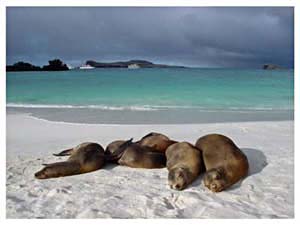 |
|
|
" I never dreamed that islands, about fifty
or sixty miles apart, and most of them in sight of each other, formed of
precisely the same rocks, placed under a quite similar climate, rising to
a nearly equal height, would have been differently tenanted." - Charles Darwin |
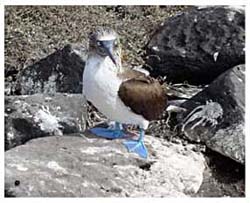 The famous Blue Footed Booby |
Everybody's favorite animal was the humorous Blue Footed Booby. It got it's name from the Spanish word "bobo" which means clown, due to their bright blue feet (no one knows why they have them) and the silly little mating dance they are famous for...they start with the male whistling and the female honking which starts the courtship dance of slow, deliberate leg lifts and "sky-pointing" with their beaks. They offer twigs then make their nest out in the open (usually right in the middle of the trail). They take turns sitting on the nest. The babies grow fast and can look bigger than their parents with such a thick fluffy coat of white down. |
|
These colorful crabs were striking with their vermilion
armor against the black lava rocks. It will "spit" from it's
eye to release saltwater that is absorbed through it's exoskeleton. This
is just an awesome picture Brian took with our macro lens. |
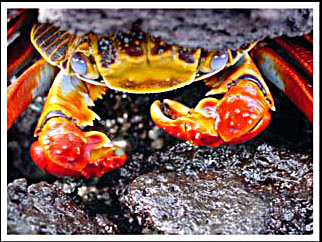 Sally Light-Foot Crab |
|
|
The Great Seal Race Our students from BROADREACH took some time to play games while on shore. This was the result of the Great Seal Race...(p.s. there are no seals at the Galapagos. It was a more challenging game |
|
A VISIT FROM DANNY GLOVER!! In 1793 a post office barrel was put up on the island of Floreana to facilitate delivery to the United States and Europe. Today, there continues a travelers tradition to write a postcard and leave it in the box. Another traveler will stop by and look through the mail and find a postcard with an address near them and they take it back to the states to either hand deliver or mail it to the recipient. Our student, Angela Berry, from Greensboro, NC, had Danny Glover PERSONALLY deliver her postcard to her aunt!! |
|
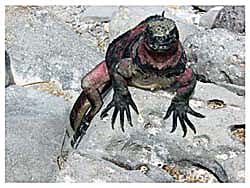 The Galapagos Marine Iguana |
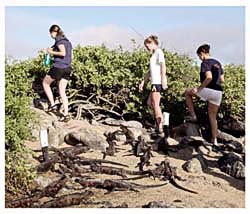 |
| The Galapagos Marine Iguana is another peculiar example of evolution at work. These vegetarian lizards moved away from the dwindling land vegetation and adapted to swimming off shore to eat the algae on the lava rocks. You also had to be carefull where you walked since there were so many lounging in the sun. |
Galapagos National Park Rules
|
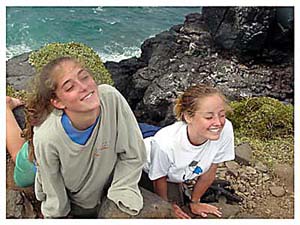 |
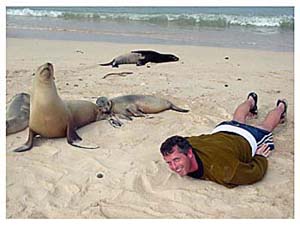 |
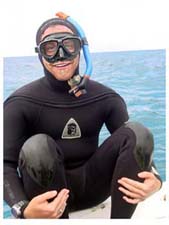 |
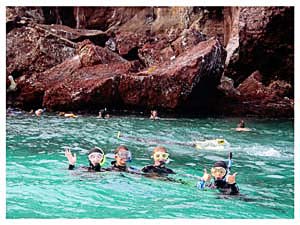 |
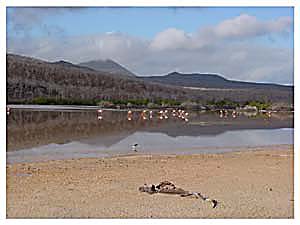 |
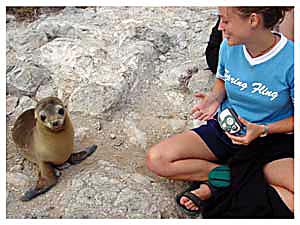 |
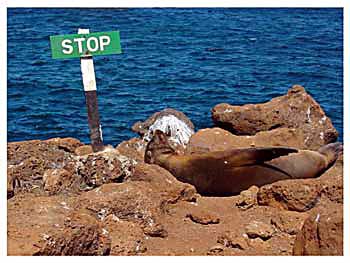 |
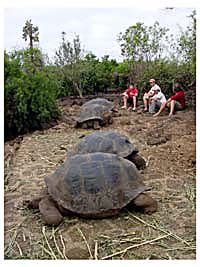 |
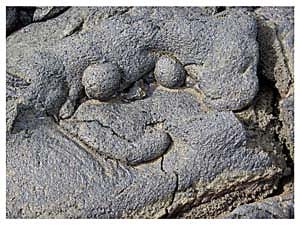 |
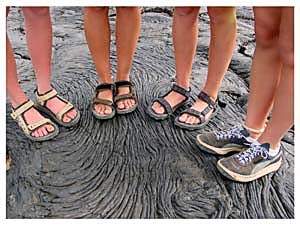 |
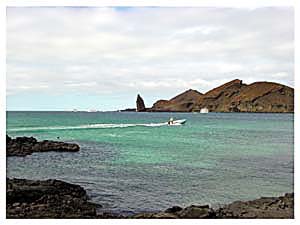 |
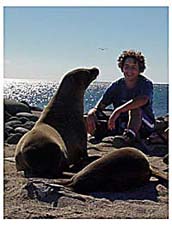 |
|
|